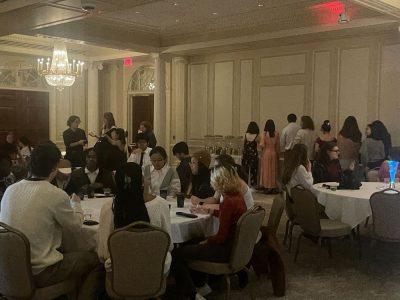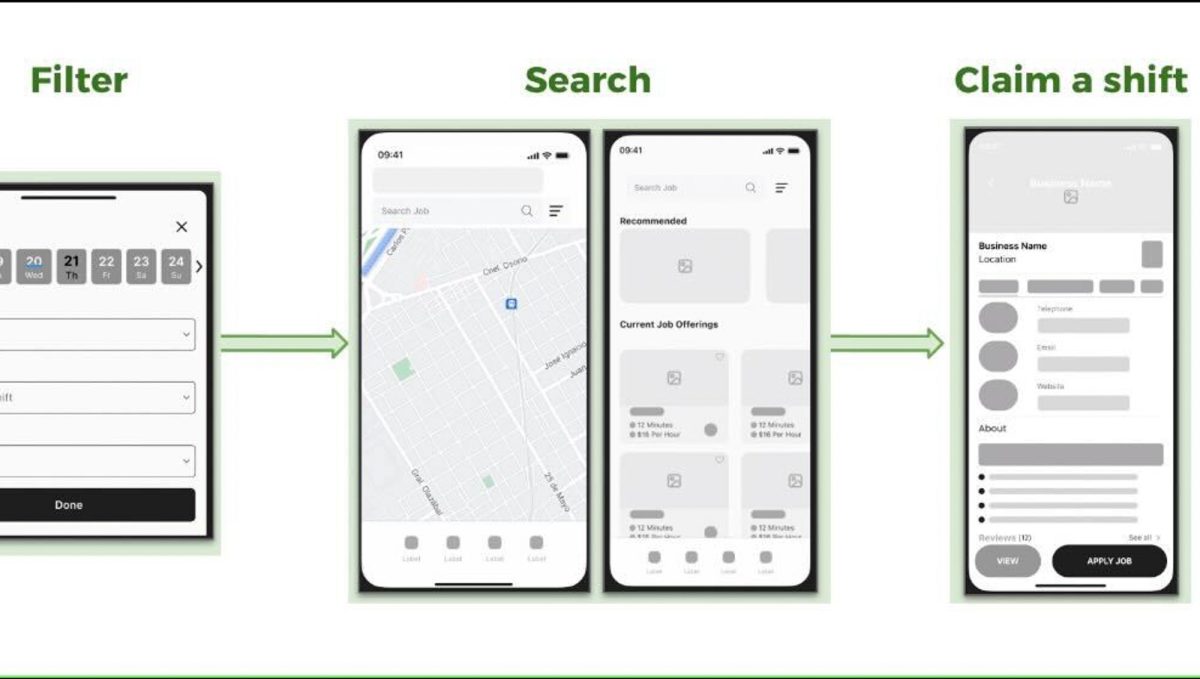In the ballroom on the ninth floor of One Silber Way, students and faculty danced and partied together, but barely anyone spoke aloud. Instead, people were almost exclusively using American Sign Language.
That was the scene at the annual ASL Ball on Friday. The ball is the largest event organized by the Deaf Studies Club, dedicated to promoting a positive environment for those learning ASL and the Deaf community.

Taylor Steele, a senior at the College of Communication and the president of the Deaf Studies Club, greeted attendees entering the ballroom, a deaf space in which attendees were encouraged to communicate only via ASL.
The Deaf Studies Club organizes events at Boston University like the ASL Ball and contributes to other events like Deaf Space.
“We like to work in close collaboration with the Deaf Studies faculty to make sure we are promoting their community in a way that is respectful,” Steele said.
The event provided many opportunities for students and the wider BU community to engage in conversations in ASL, regardless of skill level.
Andrew Bottoms, senior lecturer and director of the Deaf Studies program at BU, said through a sign language interpreter that he was very appreciative that events like these can exist to help people open their minds to a whole new perspective, one with the Deaf community in mind.
“We’re responsible to be a bridge between the Deaf community in New England and the BU community,” Bottoms said. “But we want to be able to bridge those two worlds, and so BU Deaf Studies staff feel as though it’s a part of our responsibility to do that. The Deaf Studies club is a really great way for us to do that.”
BU offers ASL courses in Wheelock College of Education and Human Development alongside a wide variety of classes in the Deaf Studies department. Students taking some of the courses were required to attend the event to learn to navigate a world communicating in ASL.
For Ashlei Boisvert, a junior in COM, this was her first time attending the ball, presenting a whole new experience as someone who signs a little but is not enrolled in ASL at BU.
“I think it was a very fun and interesting opportunity,” Boisvert said. “It helps me realize how much I rely on verbal communication versus hand signing and such, so I think it was a good experience to have the opportunity to test out my signing and see it from their perspective.”
Other students, like Tami Gordon, a junior in the College of Arts and Sciences who has attended events every semester they’ve taken ASL, have brought along friends that don’t have a connection to the language through classes or extracurriculars.
“I took two languages before I started with ASL and I feel like ASL has been the most welcoming, not only in their people but also in the style of learning,” Gordon said.
The strong connection between the club and faculty members could be felt at the event, with many professors signing to students and taking photos with them.
ASL serves as a unifying factor between these different groups, as the act of signing helps create a unique bond between those who know the language. Even those who could only sign the basics like “hello” and “nice to meet you” were accepted and connected with those who knew the language more fluently.
The ball helps create environments at BU that push against common stereotypes, allowing the Deaf community an opportunity to promote a better understanding of deaf people and Deaf culture.
“I think that there are a lot of misconceptions about us as Deaf people, people tend to pathologize Deaf people as being broken,” Bottoms said. “Events like this, where they’re all signing, I feel like that is important. I feel like it is valuable.”



















































































































